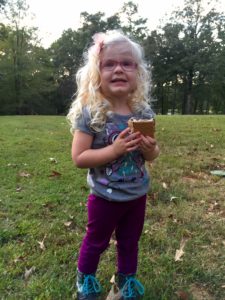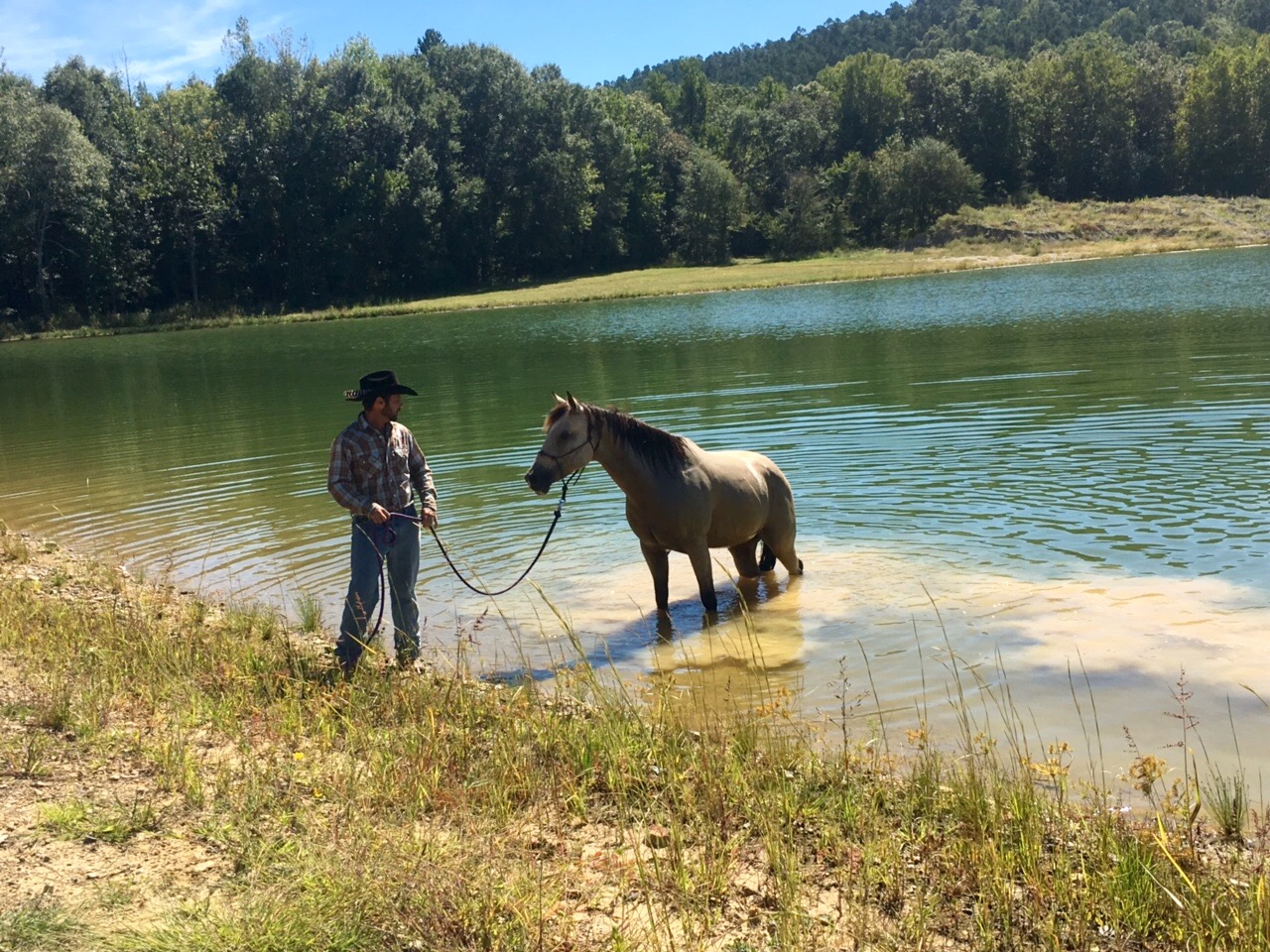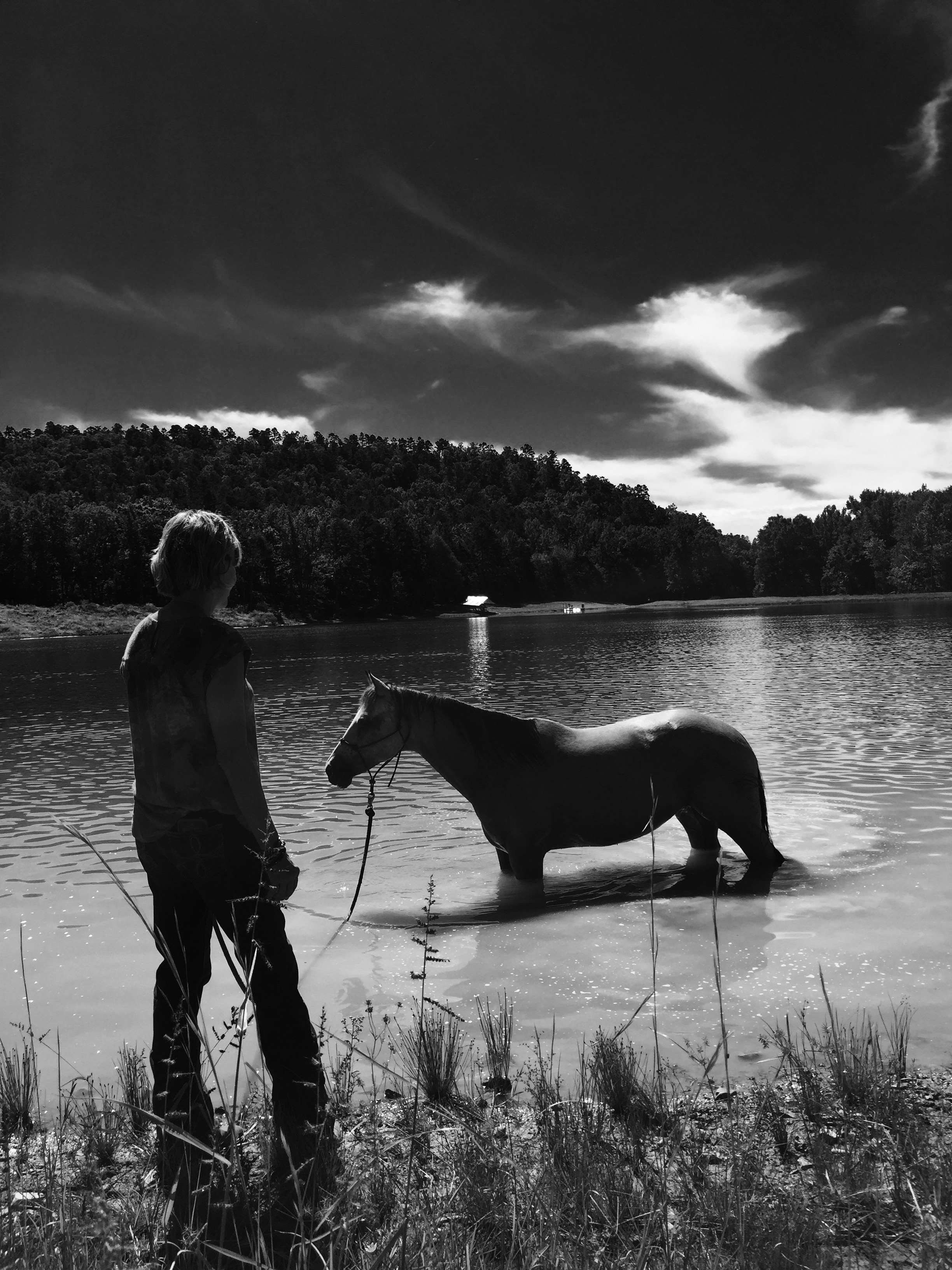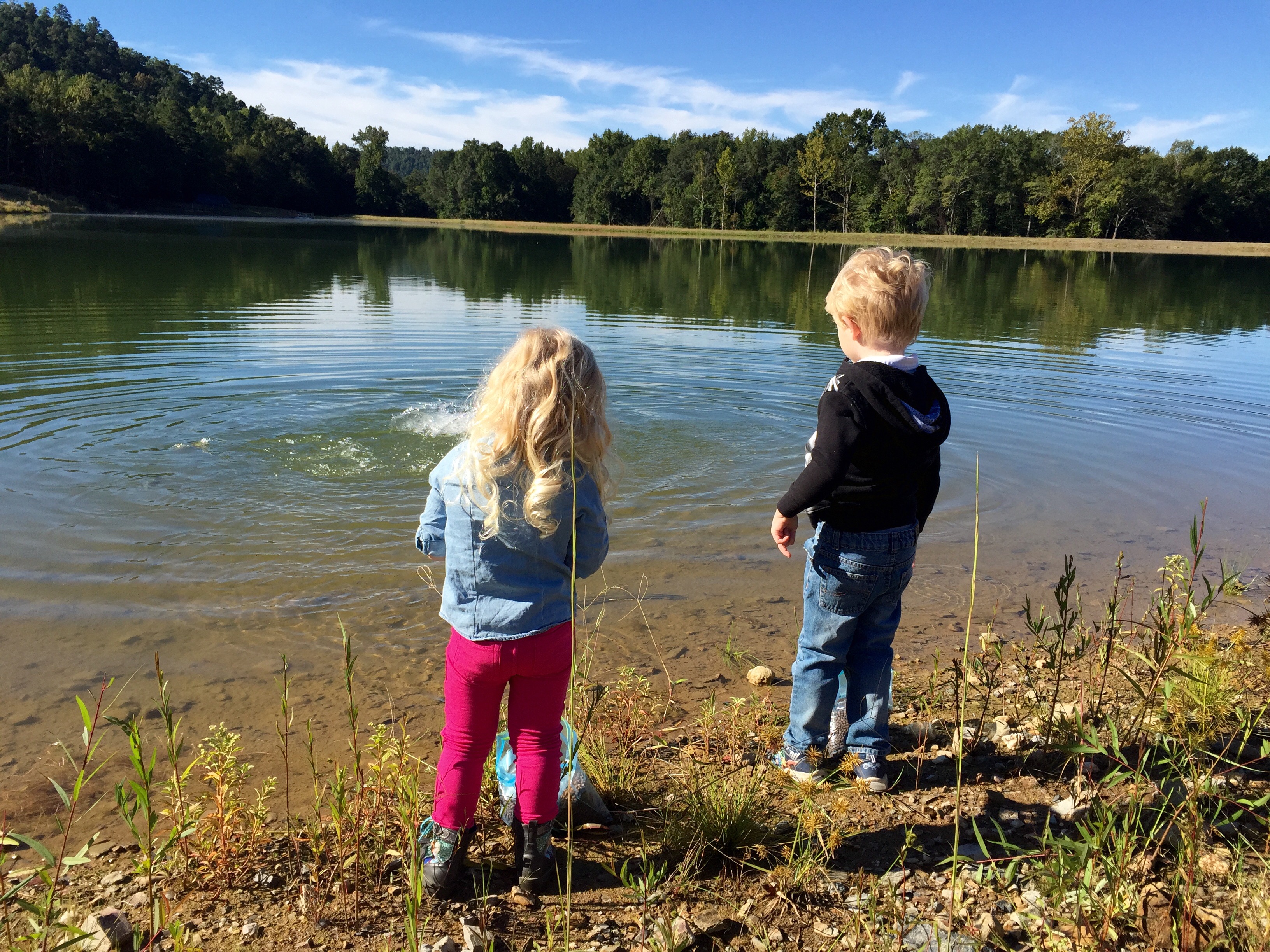HOME
The Natural Horsemann – Arkansas Family Trip
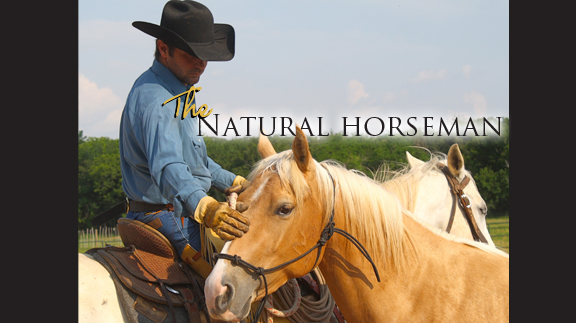
By Steve Stevens
About two weeks ago we got a chance to take a family business trip. Our client and friend had moved her horses up to her beautiful property that backs up to the Ouachita National Forest near Mena, Arkansas. We went up there more as a consultant for the best way to work her horses on and around her property.
We started the first day of the trip with some family time spending the night in Broken Bow, Okla. We woke up early in the morning on the second day to explore Beaver Bend State Park. The weather was nice and cool and Beaver Bend seemed to really be a special place. If you guys follow us at all, you know how important it is to us to get out in nature and remind ourselves that the world does not center around us.
We took the kids on their first little hike in the forest and it started to rain through the tall trees.
I am not sure how much the kids enjoyed it, but Amanda and I were able to take some deep breaths and let go for a few minutes.
We arrived in Mena later that afternoon and we followed our friends, Terri and Ed, back to their property in the forest. They had rivers and lakes and trails all over the place. We were spoiled. Terri had set us up for some glamping (a fusion of glamour and camping). The camper sat in front of the fire pit which would be the site of our children having their first roasted marshmallow and s’mores. Thank you Terri and Ed!
While the kids went for a ride on a paddle boat on the lake and fed fish, I finally had to go to work. We started working the little dun filly in the round pen that overlooks the beautiful lake. I think Terri was so happy to have us there and was more interested in hanging out with the kids than working. We pushed through going over her horse’s foundation work and called it a day.
I got up early the next morning and sneaked down to the lake to watch the fog lift before everyone else was up.
Terri had really wanted us to work on getting her mare Cheyenne across a bridge that led to the lake that she was having trouble with. Her horse definitely didn’t want to get close to it. There was water on one side and kind of a bog on the other. So I jumped down in the bog and worked her around the bridge, not trying to force her on the bridge, just made it difficult for her by moving her feet. When she went towards the bridge I would take the pressure off. Before long she stepped on and a few minutes later she was walking across it with no problem.
I showed Terri some exercises to do around the lake and then thought maybe it would be fun to see if Cheyenne would get in the water. It took a little work, but once she was in the lake she didn’t want to get out.
It was a special moment for myself and Terri. Then we switched, and she put Cheyenne in the lake herself. Terri and Ed built this beautiful lake themselves and didn’t realize that (in my opinion) they built the lake for their horses.
We can take advantage of riding on our property whether it is one acre or it is backed up to a national forest. But we need to always use our common sense by making sure that our riding area is safe in relation to our horses and our own ability. Start simple and build out.
This is a hard one for people to live up to, but if you can’t walk, trot and canter your horse in a safe enclosed pen, you probably aren’t ready to ride out in more difficult areas.
Thank you again Terri and Ed for the wonderful adventures.
Farm & Ranch
Acorn Toxicity

By Barry Whitworth, DVM, MPH
With the prolonged drought, most pastures in Oklahoma end up in poor condition. With the lack of available forage, animals may go in search of alternative foods.
If oak trees are in the pastures, acorns may be a favorite meal for some livestock in the fall. This may result in oak poisoning.
Oak leaves, twigs, buds, and acorns may be toxic to some animals when consumed.
To read more, pick up a copy of the November edition of North Texas Farm & Ranch magazine, available digitally and in print. To subscribe by mail, call 940-872-5922.

Farm & Ranch
Silver Bluestems

By: Tony Dean
There are a handful of grasses on North Texas grazing lands ranchers need to know, not because they are highly desirable, but rather because they are not of much value. I call them “decom” plants, which is am acronym for “Don’t Ever Count On Me.” Silver bluestem is a “decom” grass.
Silver bluestem is a perennial which grows in all areas of Texas. It can survive in almost all soil types, and in full sun conditions or in semi shade. It grows up to three feet tall and is easily recognized with the presence of the white fuzzy seed head. Also, one of the identifying characteristics of Silver bluestem is a bend in the stems at each node, causing the plants to take on a rounded shape as they mature.
To read more, pick up a copy of the November edition of North Texas Farm & Ranch magazine, available digitally and in print. To subscribe by mail, call 940-872-5922.

Farm & Ranch
Meanwhile Back At The Ranch

By: Rayford Pullen
Fall is here which means winter is closing in on us and before we officially get into winter, we need to make sure our factories are either producing or will be producing in a few months.
We have been pregnancy testing our cows this fall and if they are not bred or nursing a calf, we are bidding them adios. With annual costs somewhere between $900.00 and $1,000.00 per cow, those cows not producing a live weaned calf are costing us quite a bit.
To read more, pick up a copy of the November edition of North Texas Farm & Ranch magazine, available digitally and in print. To subscribe by mail, call 940-872-5922.
-

 Country Lifestyles2 years ago
Country Lifestyles2 years agoScott & Stacey Schumacher: A Growth Mindset
-

 Country Lifestyles8 years ago
Country Lifestyles8 years agoStyle Your Profile – What your style cowboy hat says about you and new trends in 2017
-

 HOME8 years ago
HOME8 years agoGrazing North Texas – Wilman Lovegrass
-

 Equine1 year ago
Equine1 year agoThe Will to Win
-

 Country Lifestyles5 years ago
Country Lifestyles5 years agoAmber Crawford, Breakaway Roper
-

 Outdoor9 years ago
Outdoor9 years agoButtercup or Primrose?
-

 Country Lifestyles8 years ago
Country Lifestyles8 years agoJune 2016 Profile – The man behind the mic: Bob Tallman
-

 Country Lifestyles8 years ago
Country Lifestyles8 years agoDecember 2016 Profile, Rusty Riddle – The Riddle Way

